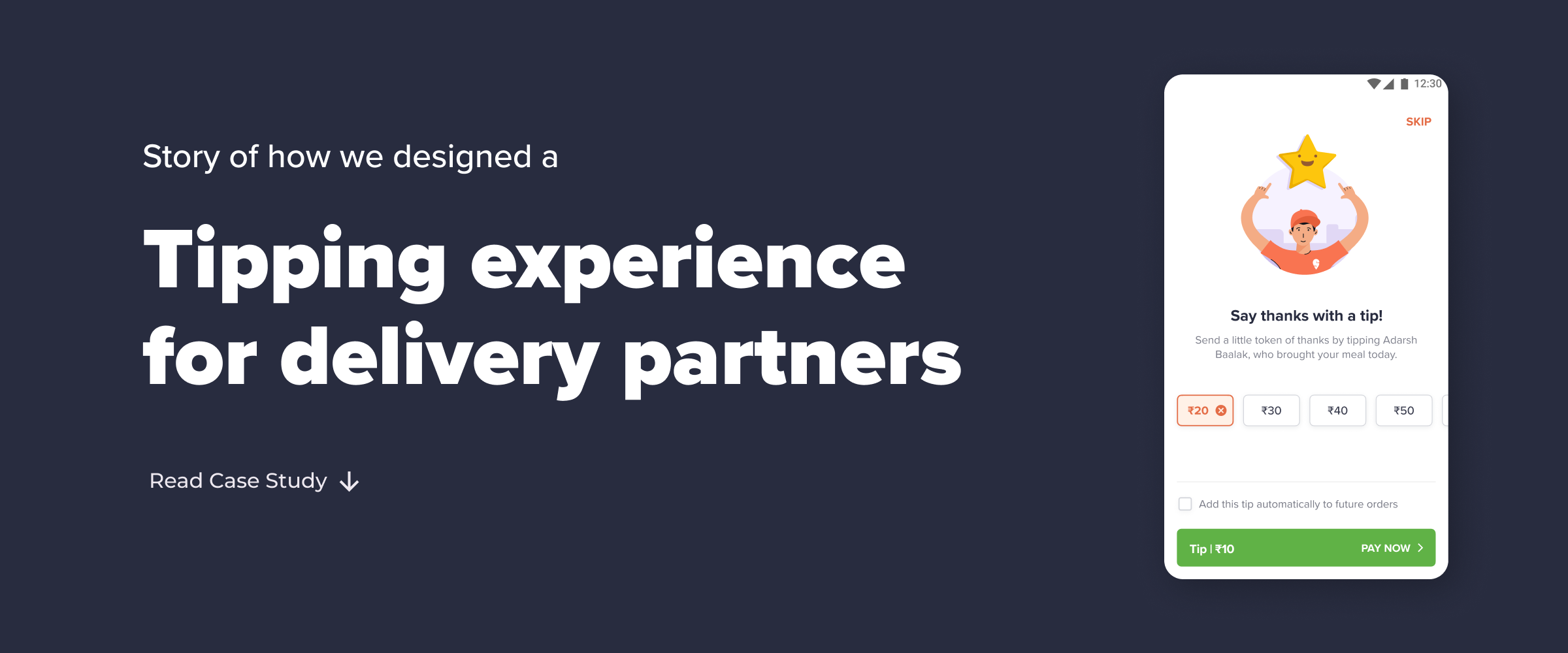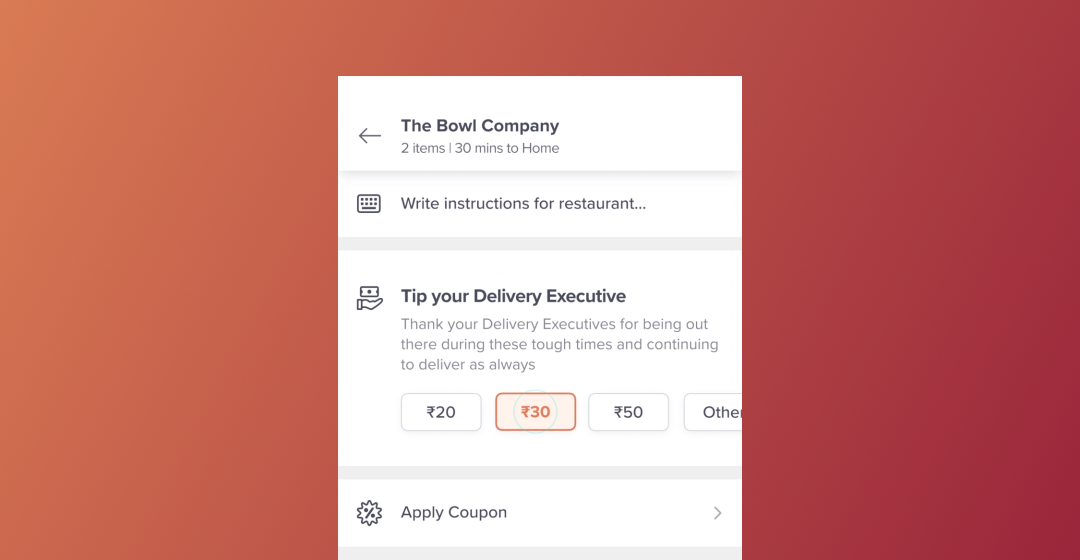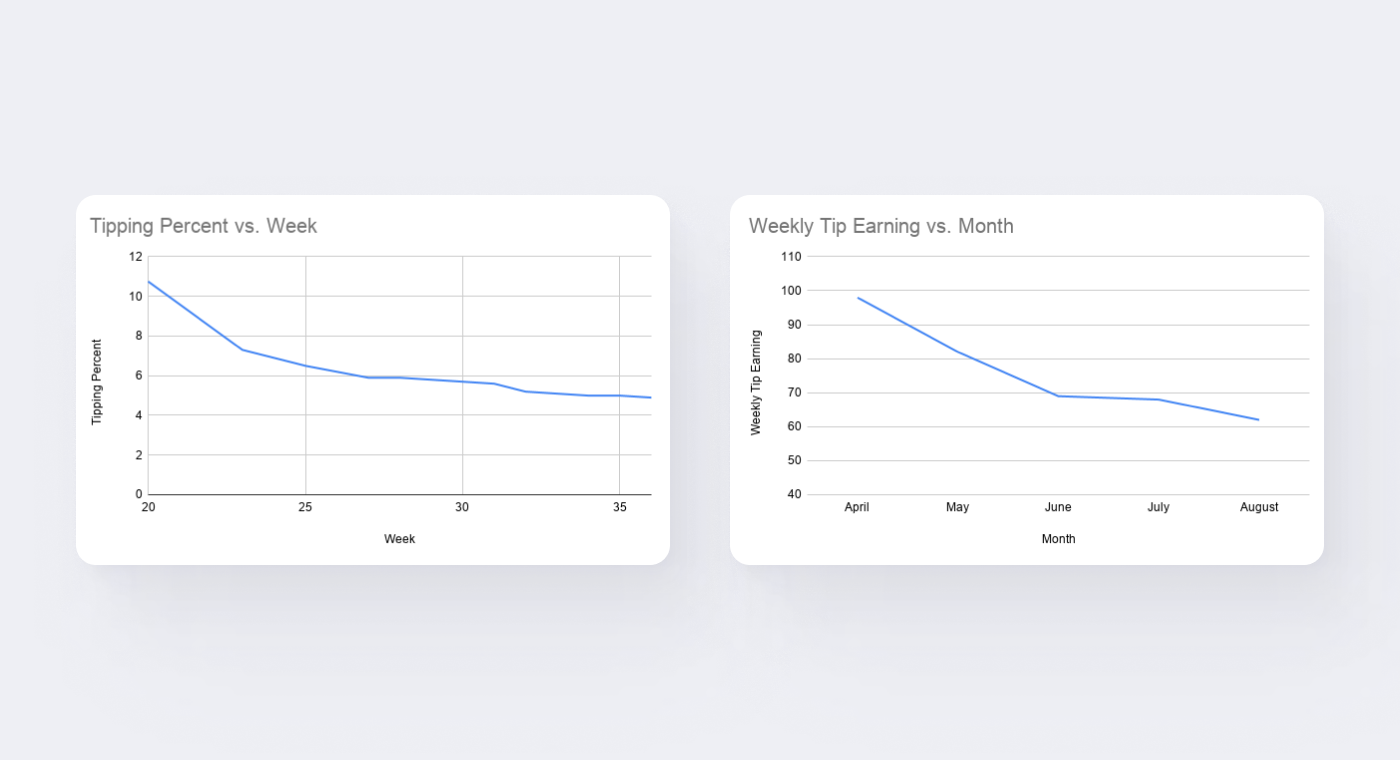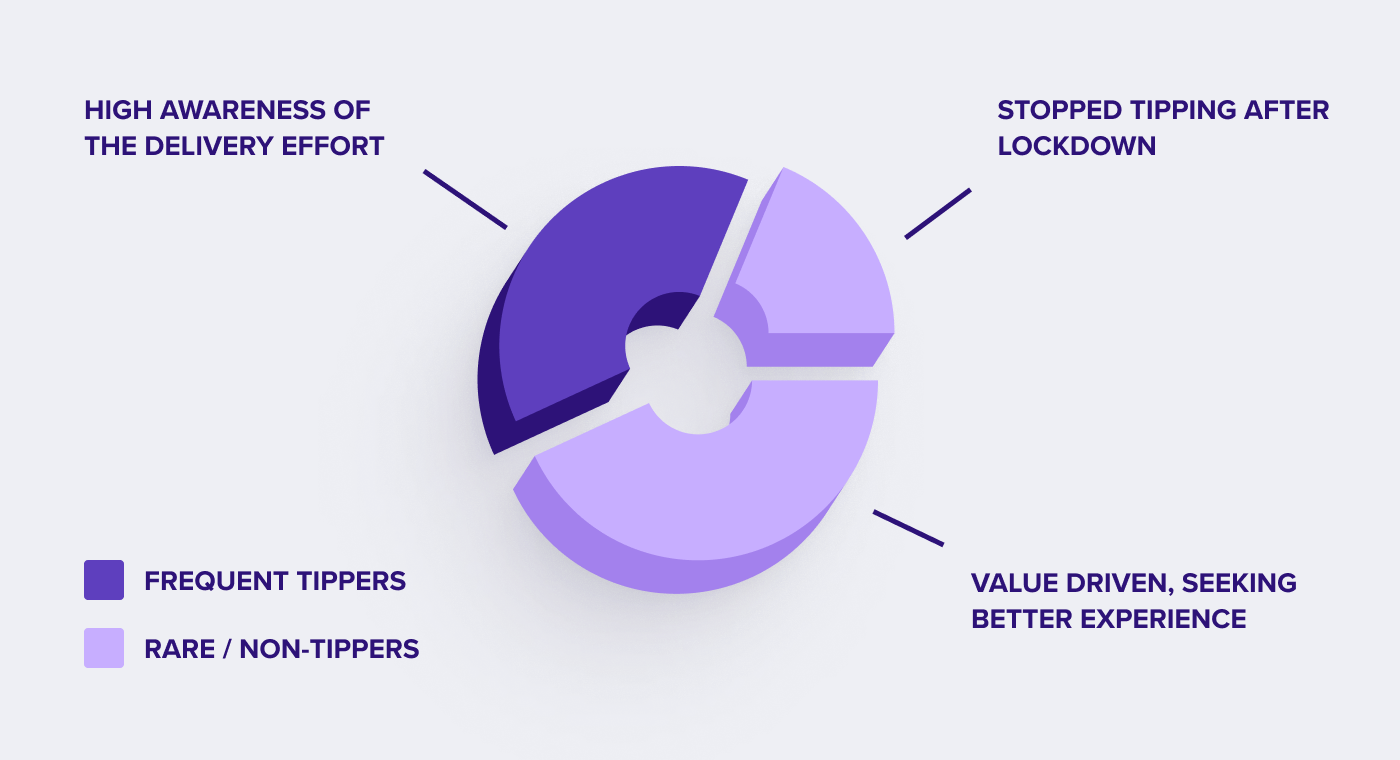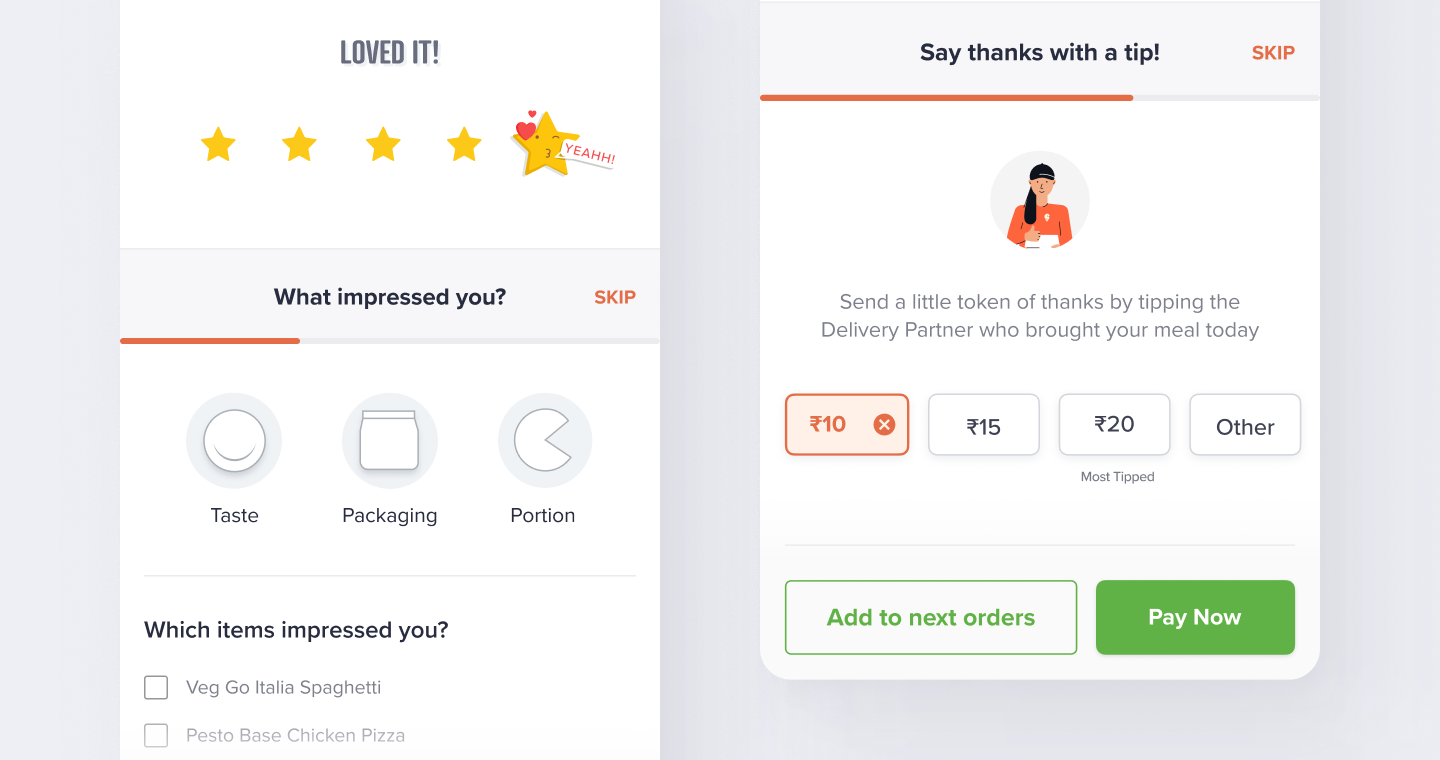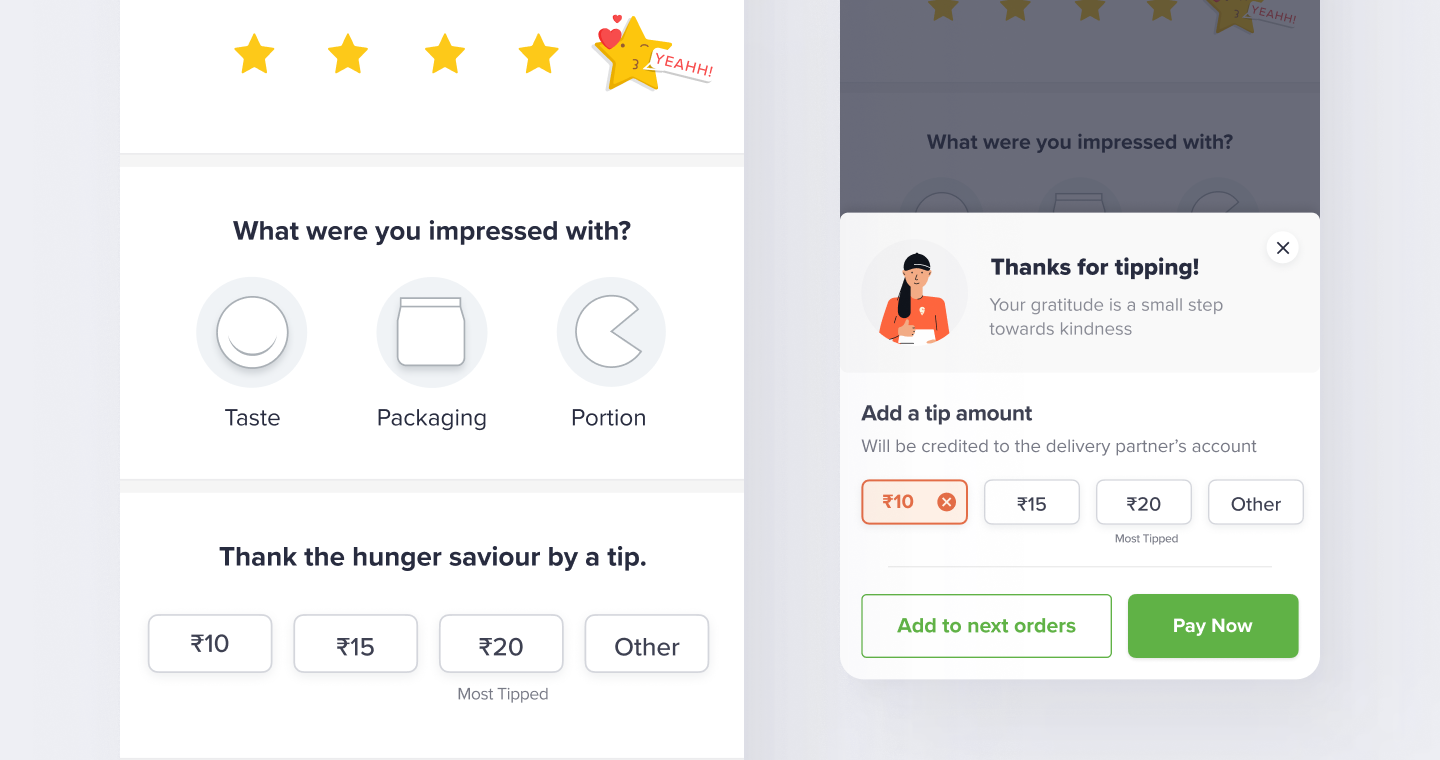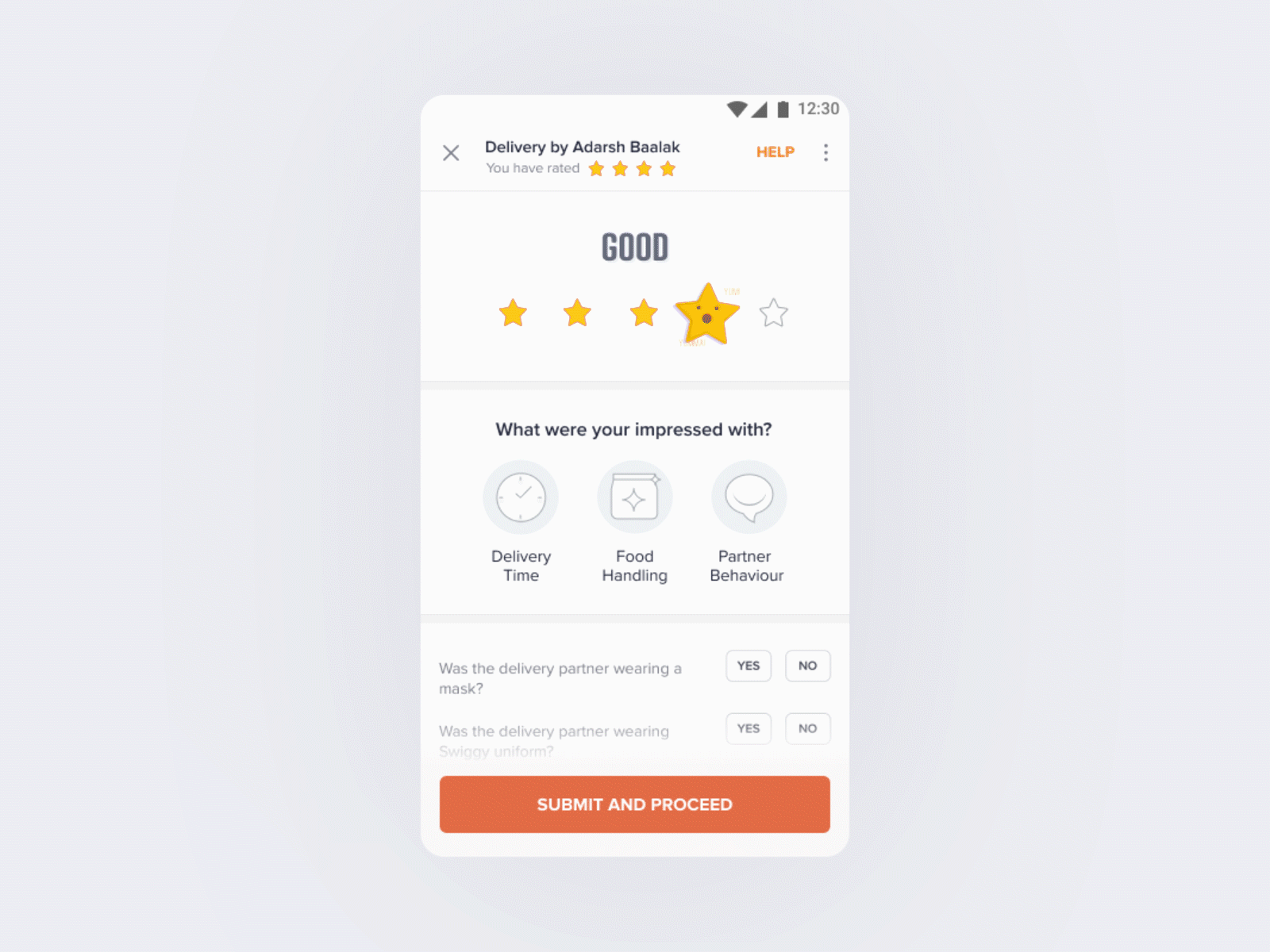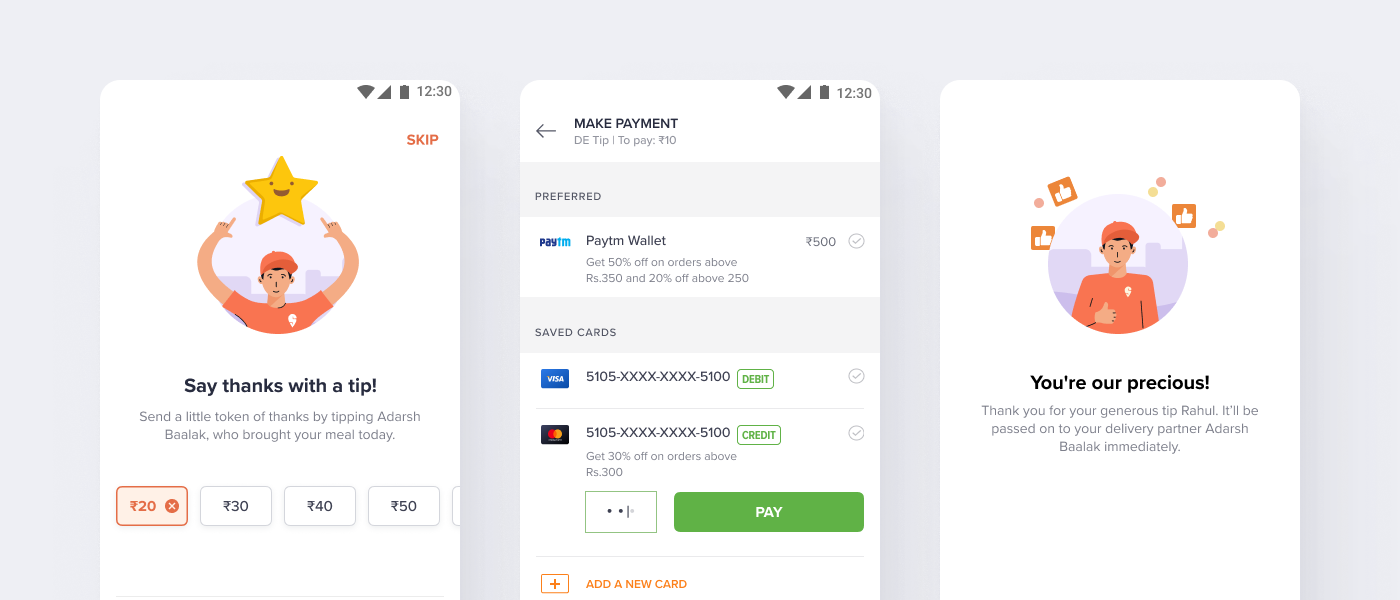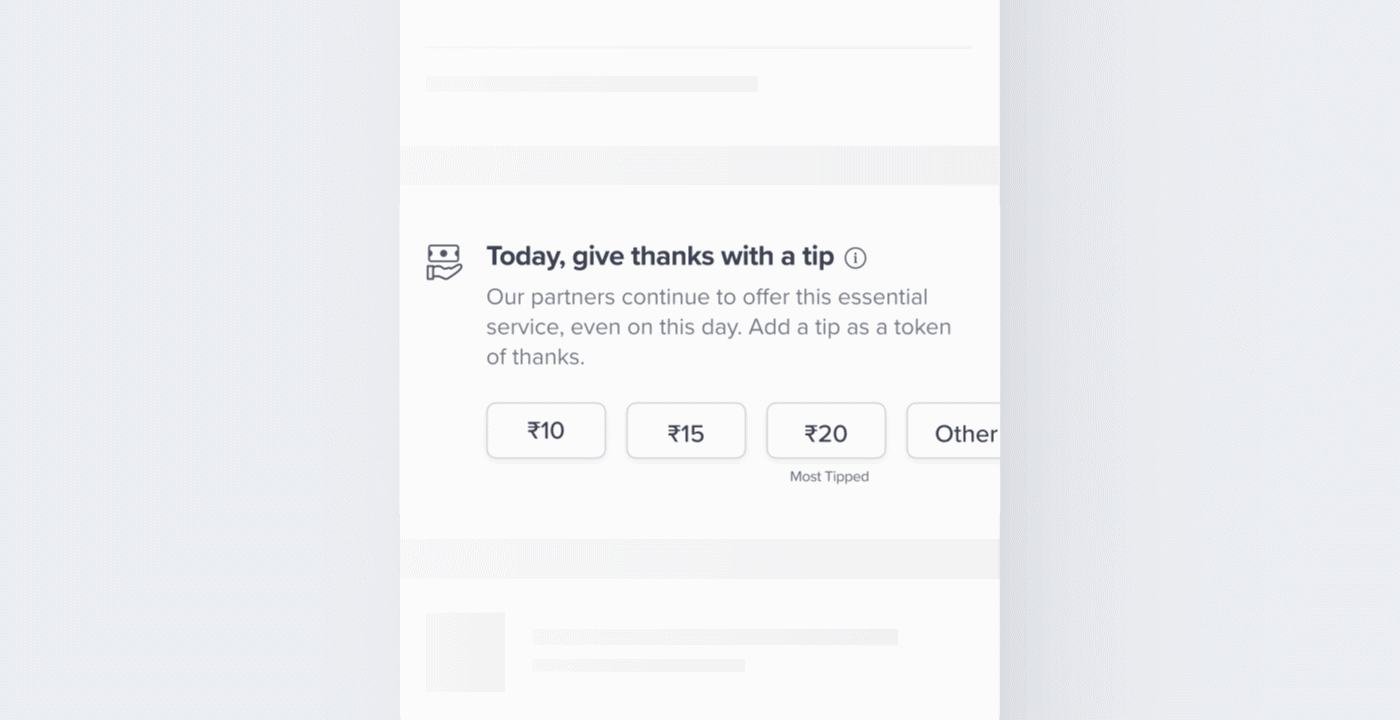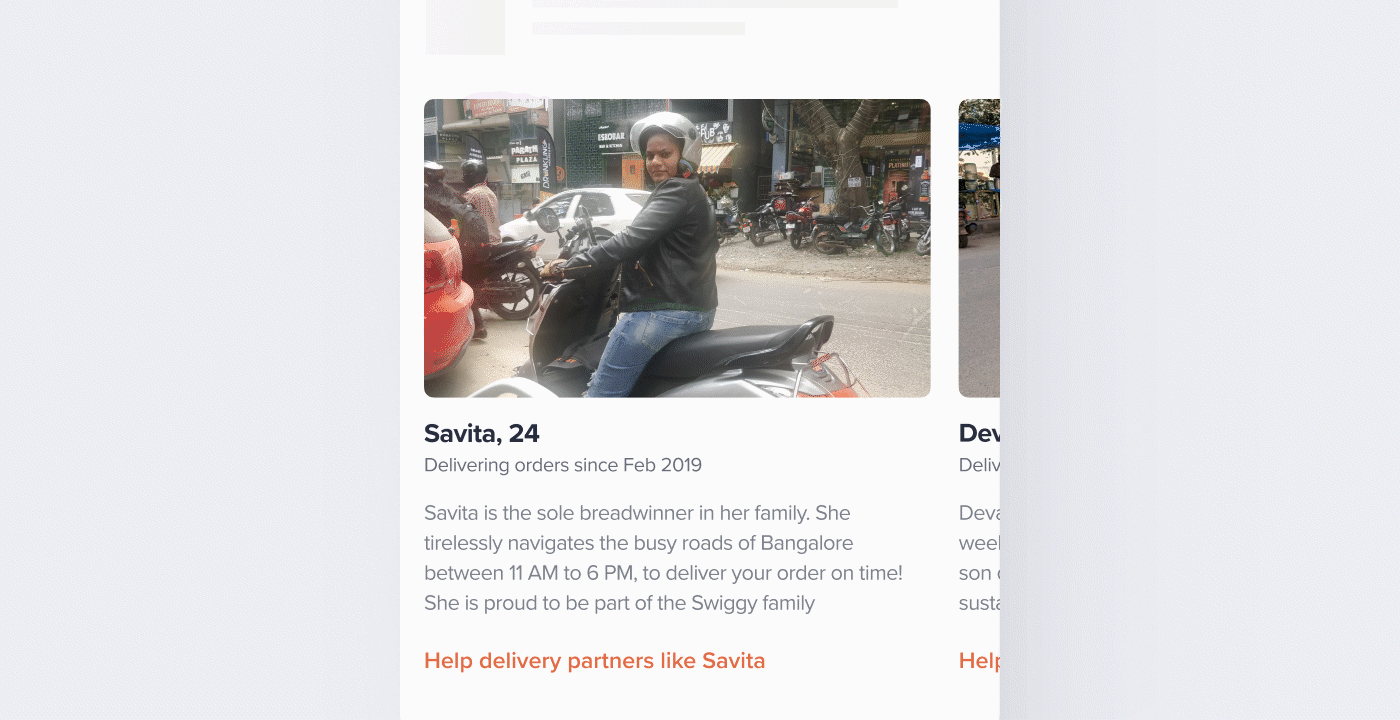It just feels like yesterday when I first stepped into the Swiggy world as an intern. This was in 2019 when I was just a kid in college excited to meet new people and design cool stuff. Time flies quickly and now we’re here in 2021. I recently completed 10 months as a product designer here, and this got me reflecting on some amazing projects I could be a part of.
Designing a tipping experience being one of them. This little project is special in a way being my first ever project as a professional designer after college.
So without further ado, let’s get started!
